Top 14 Major Ports in Italy
Italy is a European nation located on the Apennine peninsula, and is bordered by the Adriatic, Ionian, Tyrrhenian, and Ligurian Seas. It has significant maritime trade across Europe, Asia, and North Africa. It is a popular tourist spot, and is located close to the Suez Canal and Straits of Gibraltar. These make it a shipping and passenger hub.
Today, its ports are some of the busiest shipping hubs around the world. They are global leaders in cargo, container, and passenger transit.
One of the world’s leading commercial shipbuilders- Fincantieri S.p.A., operates from Italy. Its construction and repair yards are built close to some of the ports in this list.
In this article, we look at the top 14 ports of Italy. The Locode, province or region, and the most recent annual gross tonnage of the ports are also mentioned. The Locode begins with the prefix IT- indicating a port located within the territorial waters of Italy. These 14 ports are vital shipping hubs across the country, including the Italian mainland, Island of Sardinia, and Island of Sicily.
Note, despite its proximity to Sardinia, the island of Corsica is NOT a part of Italy and is under French governance.
1. Port of Trieste (ITTRS)
Friuli Venezia Giulia
Gross Tonnage 62.68 million tons (2018)
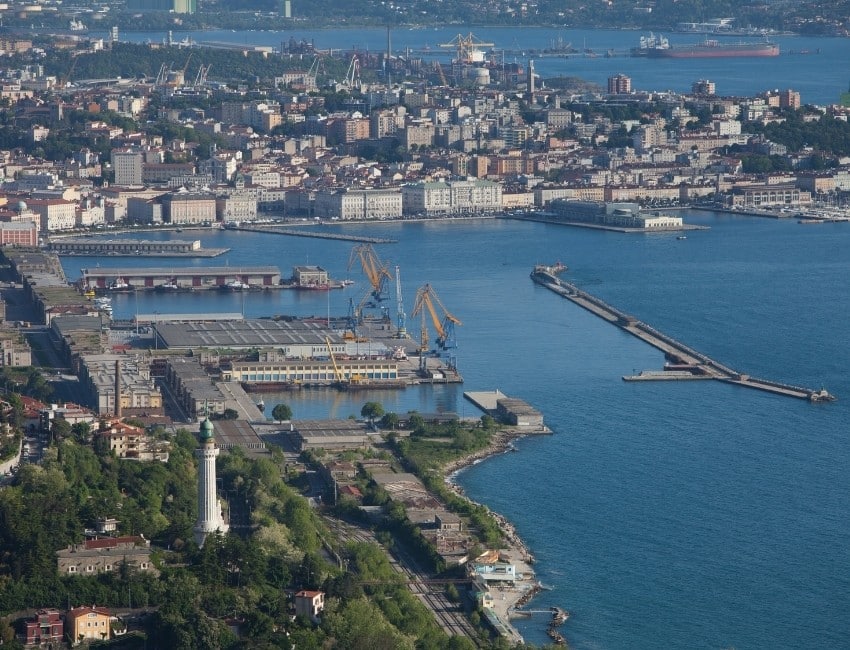
At the top of our list, Trieste is the largest port in Italy in terms of gross tonnage. It is located to the North East of the mainland. The port operates through 5 free port zones- the Old, New, Timber, Mineral Oils, and Industrial regions. These are classified into 3 commercial and 2 industrial zones.
The industrial zones are the Mineral Oils Free Area and the Canale di Zaule Free Area, which include the timber and industrial region. The other Free Port Zones include a multipurpose terminal (the Adria), container terminals, ro-ro, and ferry terminals.
Trieste port is known for its architecture and is a famous tourist destination. There are several offices, workshops, and warehouses that line the port’s waterfront. It was constructed and made operational in the early 18th century. When the Suez Canal opened, further expansion was undertaken. This allowed the port to continue catering to the new rush of vessels that sailed through the region. It services Central and Eastern Europe from its prime location on the Adriatic coast.
2. Port of Genoa (ITGOA)
Liguria
Gross Tonnage 54.26 million tons (2014)
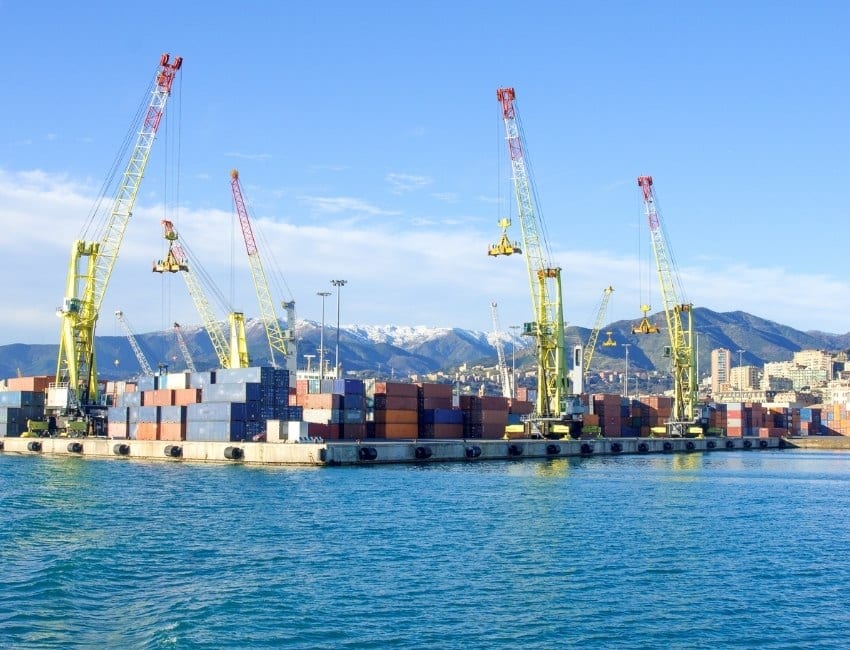
One of the largest ports in Italy, Genoa has long commanded a significant volume of trade and commerce through the region. Located on the Western coast, it competes with larger European ports such as those at Marseille and Barcelona. It is one of the busiest ports of the region, is an artificial harbor, and is built over 60 square kms. It berths over 8,000 vessels annually and has a container traffic of over 2 million TEUs.
The primary goods shipped through Genoa include coal, steel, oil, chemicals, food, and general-purpose cargo. There are 4 inlets to the port through which all traffic is directed. The Eastern inlet is connected to the Porto Vecchio, shipyards, and Sampierdarena terminals. The Western inlet is known as the Cornigliano and is used by the ILVA docks. The Multedo inlet is used for oil carriers and connects to the shipyards of the Fincantieri Group. Lastly, the Pra’ inlet is used by container vessels.
The port also has a significant passenger transit, and has 5 cruise docks and 13 ferry berths to cater to 4 million passengers annually. Cruise terminals are being built to increase port capacity. There are also marinas built to accommodate yachts. These marinas include the Exhibition Center, Duca Defli Abruzzi, Molo Vecchio, Porto Antico, Genovo Aeroporto, and Pra’ marina. The historical Lanterna and Punta Vagno lighthouses are popular tourist spots within the port premises.
3. Port of Livorno (ITLIV)
Tuscany
Gross Tonnage 36.56 million tons (2018)
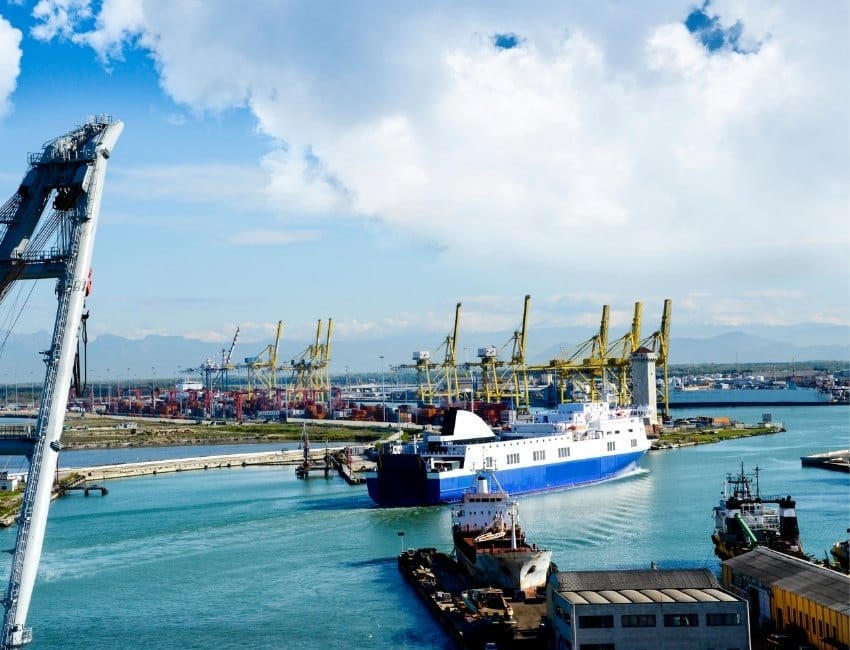
Livorno is a major port located along the Ligurian Sea on the Western coast of the mainland. It is a sea port that lies along the Tyrrhenian Sea Corridor and has a significant annual cargo transit. It is built to handle ro-ro and ro-pax, liquid and dry bulk, ferries, cruise liners, and general-purpose ships. The port is well connected to the surrounding regions of Tuscany, Emilia Romagna, Marche, and Umbria by a ferry service.
Annually, nearly 10,000 vessels berth at this port. It handled close to 0.8 million TEUs and 3.5 million passengers in 2018. The port operates out of 2 zones- the Porto Vecchio or Old Port, and Porto Nuovo or New Port. There is a total of 4 basins to service inbound and outbound ships- the 2 port zones, Avamporto, and Bacino Santo Stefano. The New Port mainly deals with industrial shipments, the St. Stefano basin deals with oil and gas cargo, while the other 2 basins service different ships. Avamporto includes the shipyards of Italian ship builders Benetti.
An important attraction at the Livorno Port is the multiple lighthouses that dot the surrounding region. These include Fanale dei Pisani, Molo Mediceo, and Diga della Vegliaia. The terminals of this port include the LNG, break bulk, container, automobile, frozen food, metal shipment, and multi-use terminals. The main metals shipped include copper and non-ferrous metals, and the LNG terminal (opened in 2007) is jointly owned by Endesa and Amga.
4. Port of Cagliari (ITCAG)
Sardinia
Gross Tonnage 35.92 million tons (2018)
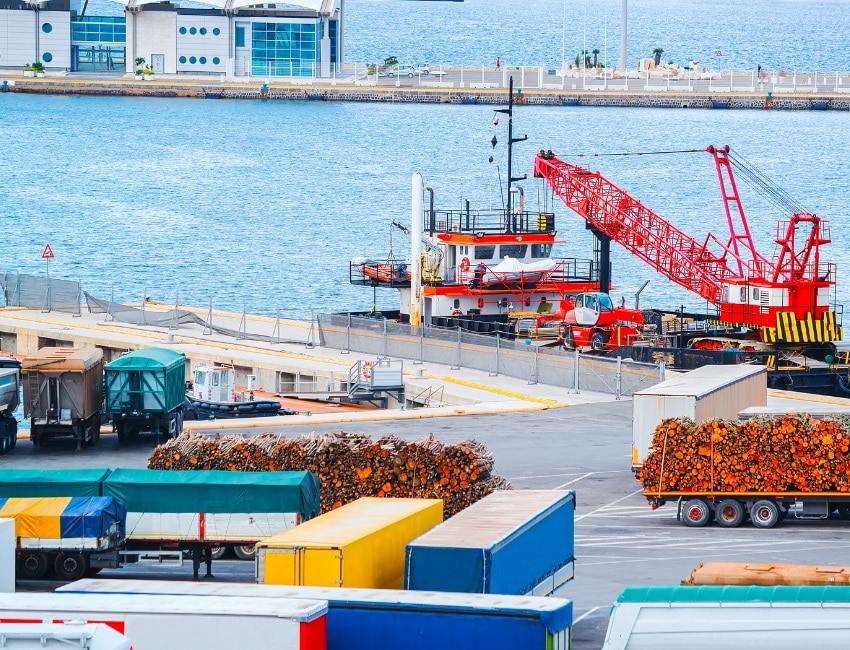
The port of Cagliari operates out of the Island of Sardinia and is a natural harbor with over 8 square kms of space. It operates 29 berths and over 50 wharfs to service the near 8,000 vessels that dock annually. It is one of the largest Mediterranean Sea ports, and has a maximum capacity of 50 million tons of cargo and 1 million TEUs. Some of the services provided from Cagliari include general cargo, bulk goods, ro-ro, transshipment, containers, passenger traffic, fishing, pleasure crafts etc.
The port is located close to the Gibraltar Suez passage and lies on a major shipping route. It is managed by the Cagliari Port Authority, which controls over 30 kms of coastline. The port is divided into 2 zones- the historic port and the canal port. The former operates nearly 6 kms of quay. It handles commercial, passenger, and ro-ro vessels. The latter operates 1.6 kms of quay, and services transshipment and ro-ro vessels from 5 berths.
Additionally, there are several berths alongside the port for the petrochemical and oil industry. The docks can accommodate over 15 ships at a time. Container vessels are docked at the Cagliari International Container Terminal (CICT) which is one of the largest terminals in Italy.
5. Port of Gioia Tauro (ITGIT)
Reggio Calabria
Gross Tonnage 29.16 million tons (2018)
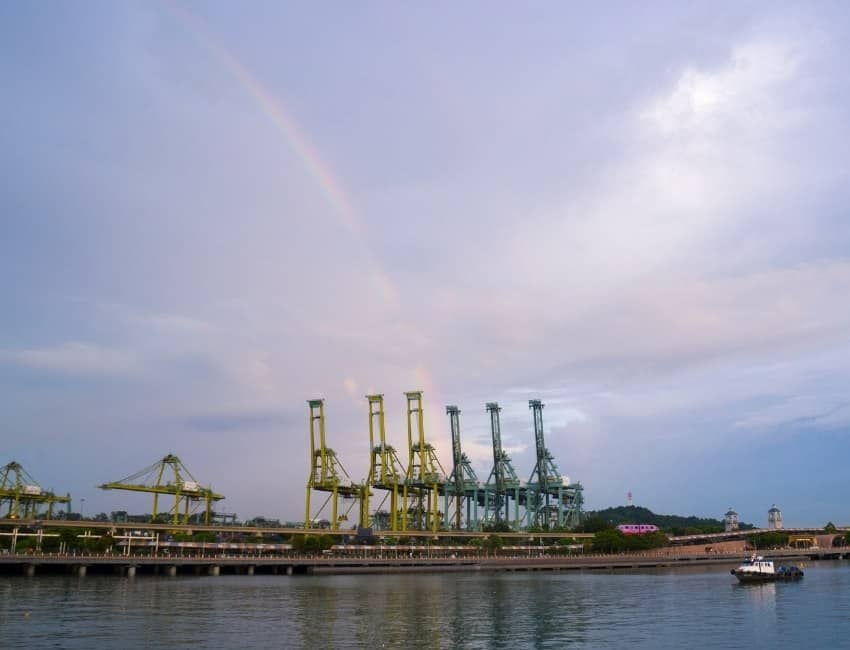
This port is close to the Gibraltar Suez route, and is a major port on the Italian mainland. It lies near the Straits of Messina bordering Sicily. The Gioia Tauro harbor is the largest port in Italy in terms of container shipments. It is ranked 6th on the Mediterranean coastline, and is 9th in Europe. The port has a large natural depth of 18 meters and has over 5 kms of docks. The port is an important hub for containers and has equipment dedicated to this.
The port is set over 4.4 square kms and is built parallel to the natural coastline. The inlet spans 300 meters, and leads to a basin 750 meters wide. There is 3.4 kms of docks on the East side, and a further 0.8 kms on the West side. The channel width spans 250 meters across the length of the port. Gioia Tauro regularly services mega container ships capable of carrying over 15,000 TEUs. However, it has not developed compared to other major Italian ports owing to smuggling through its facilities. Organized crime is rampant throughout the port and seizures of illicit drugs are common. To combat this, the port is equipped with anti-piracy units that work alongside law enforcement agencies to prevent smuggling and illegal shipments.
6. Port of Ravenna (ITRAN)
Emilia Romagna
Gross Tonnage 26.68 million tons (2018)
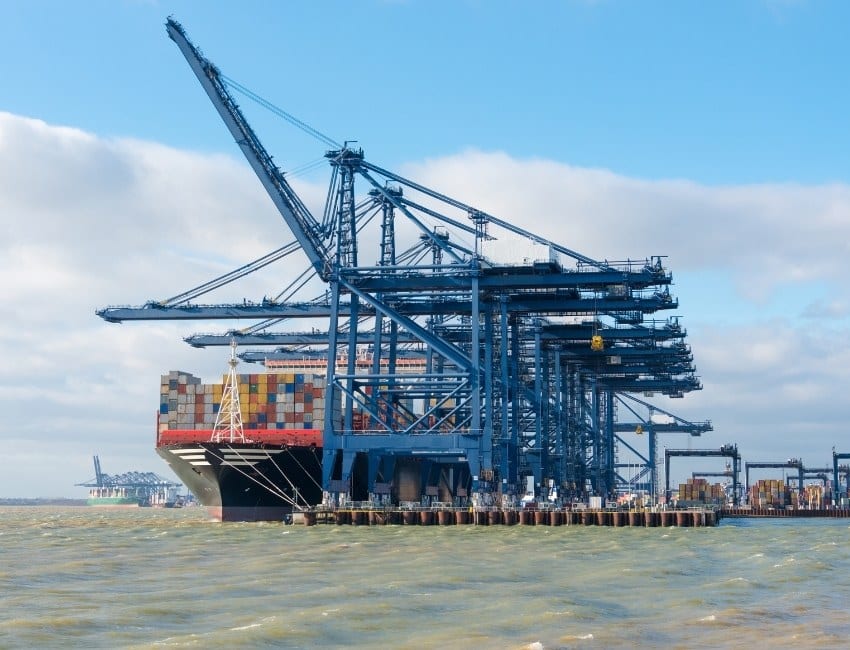
Situated on the North Adriatic coast, Ravenna is a Core sea port in Italy and is connected to the TEN-T Networks. The port deals mainly in bulk cargo, containers, general cargo, and passenger traffic. There are regular passenger services operated from here, both domestically and to neighboring European nations. Ferry services ply to Catania and Brindisi in Italy, and to Igoumenitsa in Greece. This port is situated close to the ports of Venice and Florence.
The port has facilities such as multipurpose cargo handling, passenger, and container terminals. The oil industry located nearby is in part due to the closure of surrounding facilities. Common shipments to and from this port include industrial produce, agricultural goods, fertilizers, animal feed, and food stuff. The port has 12 kms of docks and has offshore breakwaters in Porto Corsini and Marina di Ravenna.
7. Port of Venice (ITVCE)
Veneto
Gross Tonnage 26.49 million tons (2018)
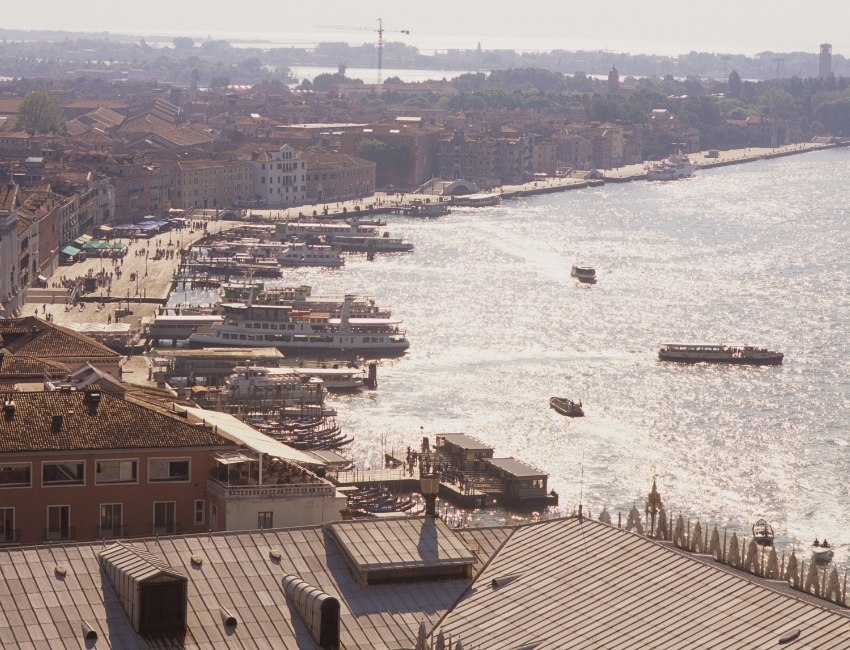
As one of the world’s most popular tourist destinations, Venice has a booming passenger and cargo sector. It is situated on the Adriatic Sea, and lies to the North East of the Italian mainland. As it is located far inland, the commercial sector supplies goods to surrounding regions and countries. It also has a very high passenger traffic. The common commercial goods shipped via Venice include containerized cargo, fish and related products, local handicrafts, and jewelry.
The port moved over 50 million gross tons of cargo in 2017, and processed nearly 50 million passengers. It is a major hub for cruise liners and super yachts on the Mediterranean coast and is a leading port in Italy. Due to its location, it supplies cargo to the trans-European network. The harbor has a natural coastal breakwater that can accommodate vessels over 200 meters in length.
The docks are equipped with state-of-the-art technology. There are 7 commercial terminals, 1 passenger terminal, and 17 miscellaneous terminals that ship liquid cargo, berth ro-ro vessels, general cargo, and project cargo. There are also oil terminals to supply to firms such as Decal, Petroven, San Marco Petroli, etc. The single passenger terminal is the Venezia Terminal Passeggeri (VTP), while the commercial terminals include the PSA Vecon, Transped S.p.A., Euroports Terminal Rinfuse Venezia (TRV), Terminal Intermodale Venezia, and Terminal Intermodale Adriatico.
8. Port of Messina (ITMSN)
Sicily
Gross Tonnage 24.43 million tons (2018)
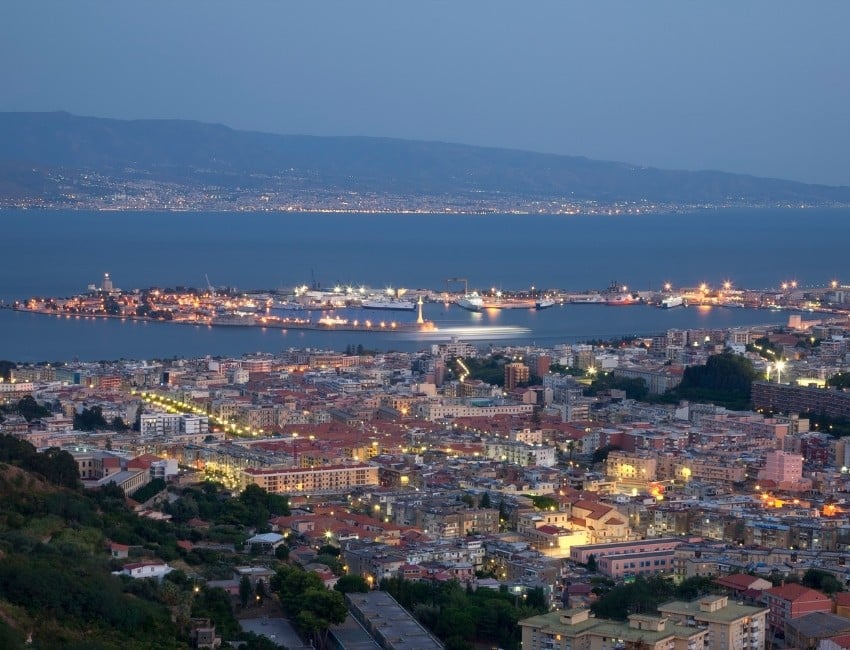
Messina is a thriving Sicilian port located to the North East of the island. Located on the strait of Messina, it lies across the narrow strip of water separating mainland Italy from Sicily. It is one of the largest ports of the region, and is a hub for passenger vessels. From cruise liners and ferries to yachts, this port has witnessed a boom in regional traffic. It has had an increase in annual passenger transit from 0.2 million in 2005 to 1 million in 2019.
The port itself is on the Western shore of the Straits, and has a natural harbor covering 0.82 square kms with a very wide and deep facility. The inlet spans 400 meters across, while the average basin depth of the docks is 40 meters. All types of vessels from cruise liners to megaships can berth at these docks. There is also a cargo handling service, and there are terminals equipped with heavy lift cranes. The port is well connected to the surrounding areas through rail, via the Messina Marittima and Messina Centrale stations. The annual gross tonnage includes the neighboring Milazzo harbor which is a satellite port for Messina.
9. Port of Augusta (ITAUG)
Sicily
Gross Tonnage 24.19 million tons (2018)
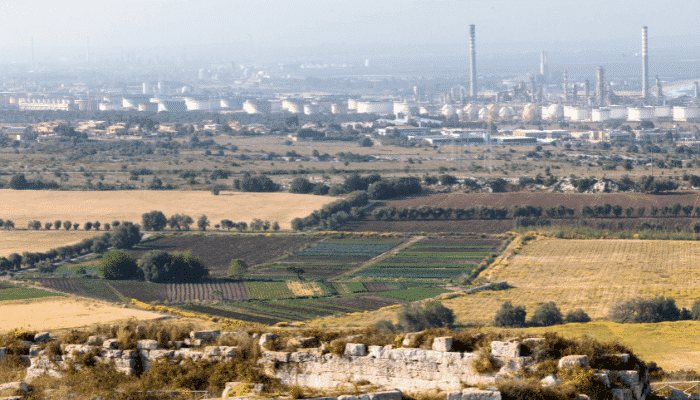
Augusta is an important Southern port in Italy, on the island of Sicily and is located close to Napoli. In the Syracuse region, it serves as a facility for both commercial trading and shipping. Common shipments through this port include inorganic chemicals, fertilizers, oil and gas etc. It has played a major role in the development of the Augusta Priolo petrochemical complex located nearby. Other important industrial firms operated from the port include Sincat, Tifeo (which deals in power), Liquigas, Ilgas, and Sotis.
Augusta Port is also an important Italian Naval base, and has been in active use since the early 20th century. It played a role in the Allied landings of World War 2, and is a Southern Command Base at present. Besides the Italian Navy, the Augusta Bay Port Facility is also the naval base of the US Navy’s Sixth Fleet. The fleet operations cover Europe and Northern Africa. Several NATO and Mediterranean exercises have been conducted from this port. The Porto Megarese, Porto Xifonio, and Seno del Priolo are also under the 6th Fleet.
10. Port of Taranto (ITTAR)
Apulia
Gross Tonnage 20.43 million tons (2018)
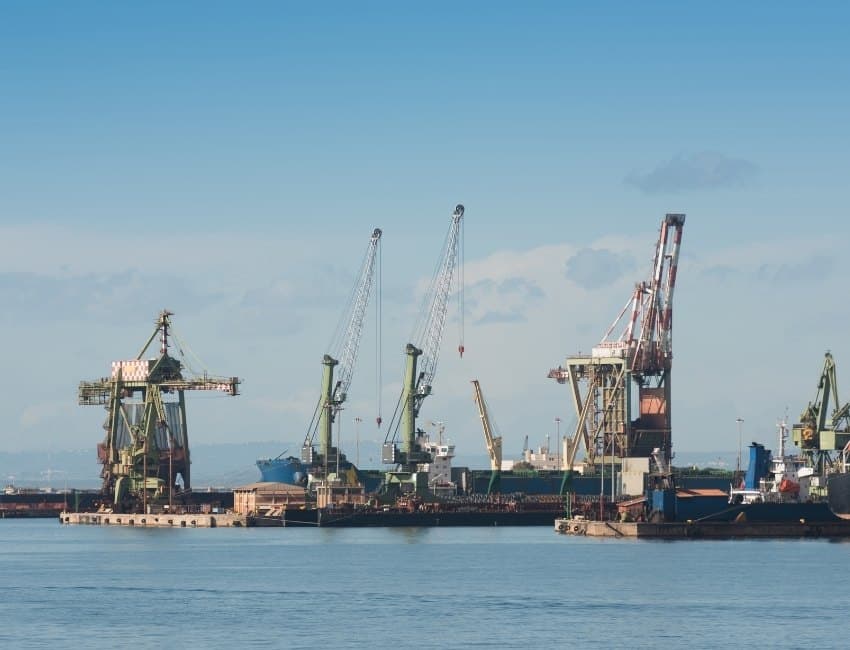
The Port of Taranto is a major commercial and naval port in Italy. It has been in service for nearly a millennium. The port services vessels carrying general cargo, containerized goods, local produce etc.
The surrounding region is an important industrial centre in Italy. This includes steel and iron industries, oil and petrol refineries, chemicals, food processing units etc. There are also naval shipyards located close to this port. The main container terminal of the port is the Taranto Container Terminal S.p.A. It is jointly owned by Hutchison Whampoa and Evergreen Marine Corp. It has been operational since 2011 and deals with transhipment.
11. Port of Napoli (ITNAP)
Campania
Gross Tonnage 17.68 million tons (2018)
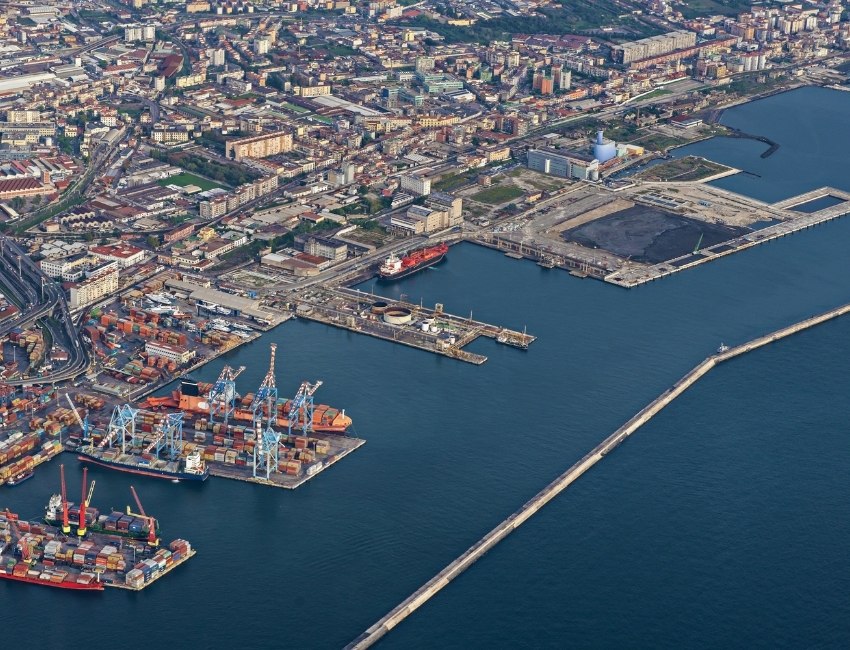
One of the largest ports in Italy and the Mediterranean, Napoli is a major seaport on the Western coast. Situated over 3 square kms of port land, it operates 38 berths and 75 wharves. It deals in cargo, commercial goods, and passenger transit. The harbour is of a natural type with artificial coastal breakwaters. Annually, nearly 100,000 vessels dock at the port and it handles nearly 1 million TEUs. It is just 15 kms away from the Naples Airport. It is also a tourist destination, with an estimated 10 million people annually transiting through the port.
Some of the common commercial shipments passing through this port include ro-ro carriers, liquid and dry bulk ships, passenger vessels such as cruise liners are yachts, and container vessels. The major terminals operating from the port are the container, commercial, automobile, and passenger hubs. The commercial section has separate terminals for timber, cellulose, and foodstuff. The ro-ro terminal has a transhipment capacity of close to 1 million units annually. The passenger hub has 10 mooring stations, 7 mobile walkways, and an annual capacity for 1.5 million pax. The port also has shipyards nearby that work within its premises. It includes 4 floating docks and 3 built docks that handle ship repairs and minor construction work.
12. Port of La Spezia (ITSPE)
Liguria
Gross Tonnage 15.78 million tons (2018)
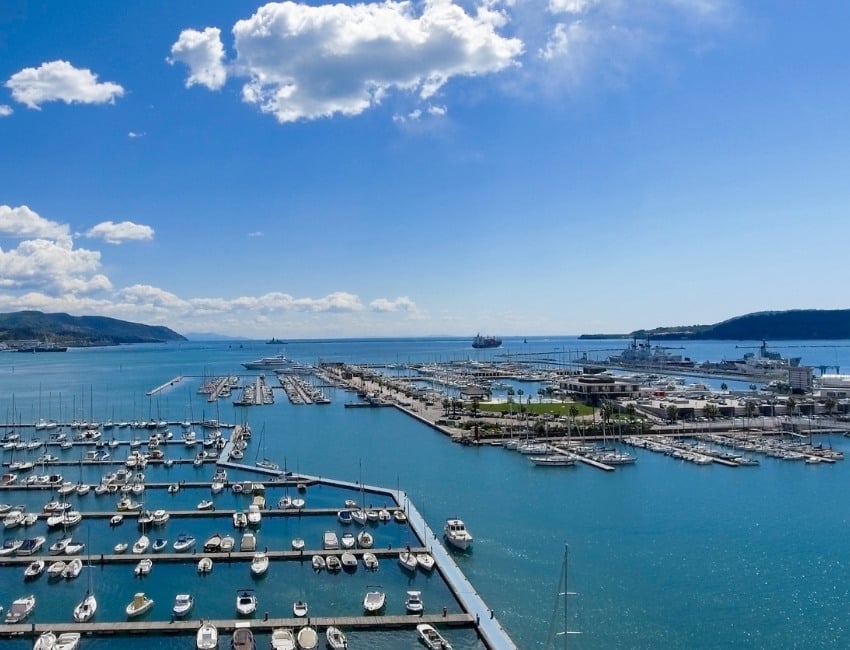
On the Western Coast of the Italian mainland, La Spezia is a major cargo and container port in Italy. It is situated on the La Spezia Gulf of the Ligurian Sea that is frequented by commercial vessels. It has been in service since the 1800s and supplies a significant amount of maritime trade to the surrounding regions. As a major port of the Mediterranean, it deals predominantly with container handling. It is ranked 2nd in the nation in terms of container transit, behind the Port of Genoa. It deals with nearly 20% of the national TEU traffic.
It is located in a bay spanning nearly 75 square km and is artificially protected by a 2.2 km breakwater. The quays of this port span over 5 km in length, and it has storage covering 400,000 square km. The port handles 15 million tons of cargo and 0.5 million passengers annually. La Spezia also has a thriving tourism sector, with new cruise terminals, yacht marinas, personal docks etc. The main terminals of this port are the container, solid and liquid bulk, oil, ro-ro, and passenger facilities.
The port also houses several companies dealing in the maritime sector including Muggiano Shipyards, San Marco shipyards, Intermarine Naval Shipyards, Navalmare Offshore SpA, and numerous ferry services. The Marina del Fezzano is a repurposed naval shipyard that works alongside Navalmare Nautica for yacht related services.
13. Port of Salerno (ITSAL)
Campania
Gross Tonnage 14.91 million tons (2018)
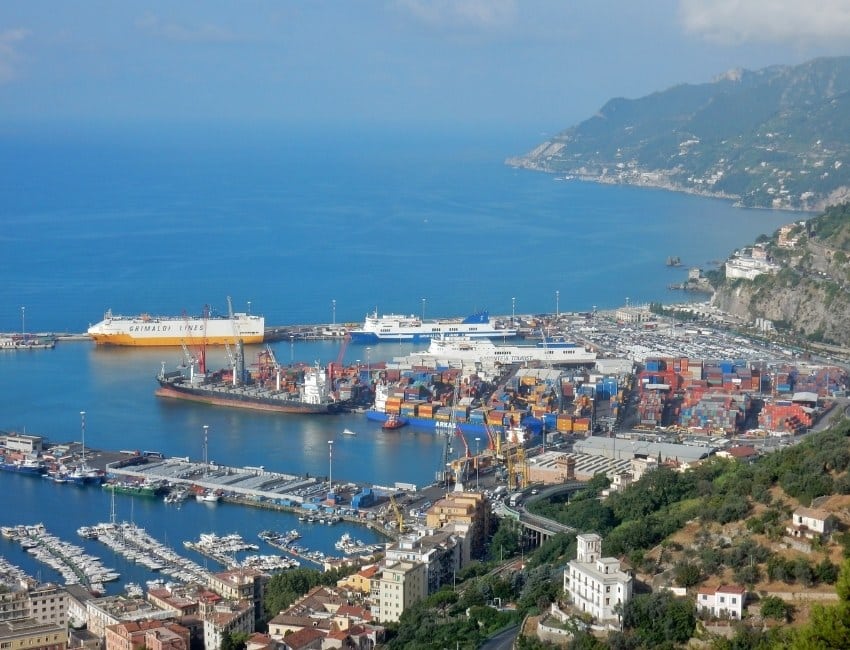
One of the important ports that supply Italy’s booming economy, Salerno is a medium-sized harbour. It is located on the Gulf of the Tyrrhenian Sea. Built on the West coast of the mainland, it lies on a major shipping route that connects to several neighbouring countries in Europe, Asia, and Africa. It is classified as a Category 2 seaport, and is managed by the Salerno Port Authority (SPA). It primarily deals with domestic transportation and services commercial, industrial, and passenger ships.
The port has an average anchorage depth of 18 meters, and a cargo pier depth of 7 meters. It is a natural harbour that uses a coastal breakwater, and can easily dock ships over 200 meters. The port handled over 60 million tons of cargo in 2018 and saw a passenger transit of close to a million individuals. The entire docking facility is classified into 3 zones- the West Quay, East Quay, and Manfredi Pier. The West zone has a 1.2 km long quay, the Eastside has 1.6 km of the quay, while the pier is 400 meters long.
14. Port of Savona (ITSVN)
Liguria
Gross Tonnage 14.89 million tons (2018)
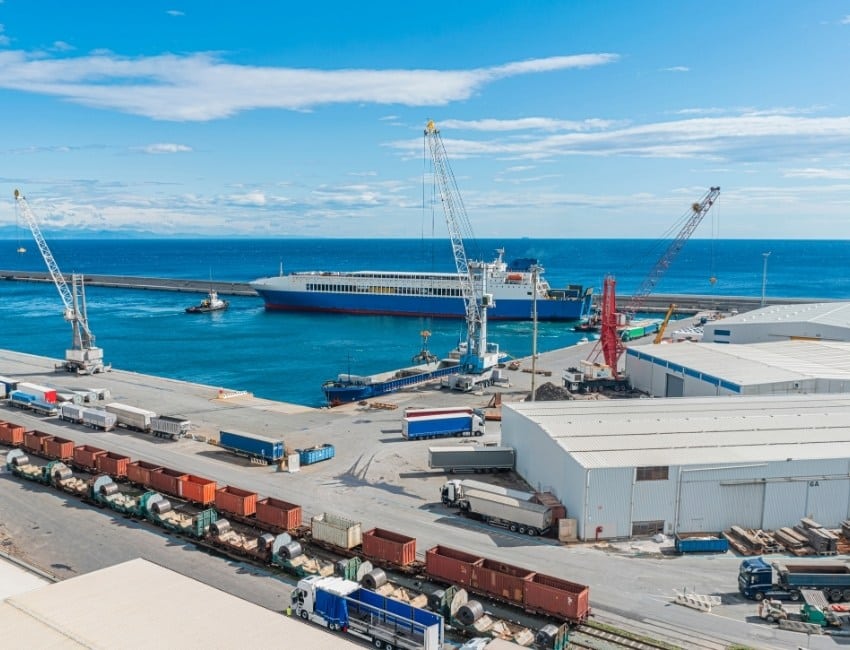
Located on the North-Western coast of Italy close to the port of Genoa, Savona is a major passenger port. From ferries and cruise ships to pleasure crafts, the port has seen an increase in inbound traffic over the years. Porto di Savona is located close to popular tourist destinations such as the city of Savona. It is the 4th busiest cruise port in Italy and witnessed a passenger transit of 2 million in 2017. The ferry service of Savona is popular, with frequent services between Corsica and Sardinia. These are operated by Corsica Ferries and Saremar, respectively. There is also a separate marina to dock personal vessels.
In addition to the passenger industry, there is a small terminal to handle minor cargo shipments. This supplies imports and exports to the surrounding hinterlands. Breakbulk vessels, ro-ro ships, bulk tankers, and container vessels dock at this port. It has an average basin depth of 15 meters. The port is connected by road to the Genoa International Airport that is located 50 km away.
Disclaimer :
The information contained in this website is for general information purposes only. While we endeavour to keep the information up to date and correct, we make no representations or warranties of any kind, express or implied, about the completeness, accuracy, reliability, suitability or availability with respect to the website or the information, products, services, or related graphics contained on the website for any purpose. Any reliance you place on such information is therefore strictly at your own risk.
In no event will we be liable for any loss or damage including without limitation, indirect or consequential loss or damage, or any loss or damage whatsoever arising from loss of data or profits arising out of, or in connection with, the use of this website.
Do you have info to share with us ? Suggest a correction
Disclaimer :
The information contained in this website is for general information purposes only. While we endeavour to keep the information up to date and correct, we make no representations or warranties of any kind, express or implied, about the completeness, accuracy, reliability, suitability or availability with respect to the website or the information, products, services, or related graphics contained on the website for any purpose. Any reliance you place on such information is therefore strictly at your own risk.
In no event will we be liable for any loss or damage including without limitation, indirect or consequential loss or damage, or any loss or damage whatsoever arising from loss of data or profits arising out of, or in connection with, the use of this website.

About Author
Ajay Menon is a graduate of the Indian Institute of Technology, Kharagpur, with an integrated major in Ocean Engineering and Naval Architecture. Besides writing, he balances chess and works out tunes on his keyboard during his free time.
Latest Maritime Knowledge Articles You Would Like:
Subscribe To Our Newsletters
By subscribing, you agree to our Privacy Policy and may receive occasional deal communications; you can unsubscribe anytime.















